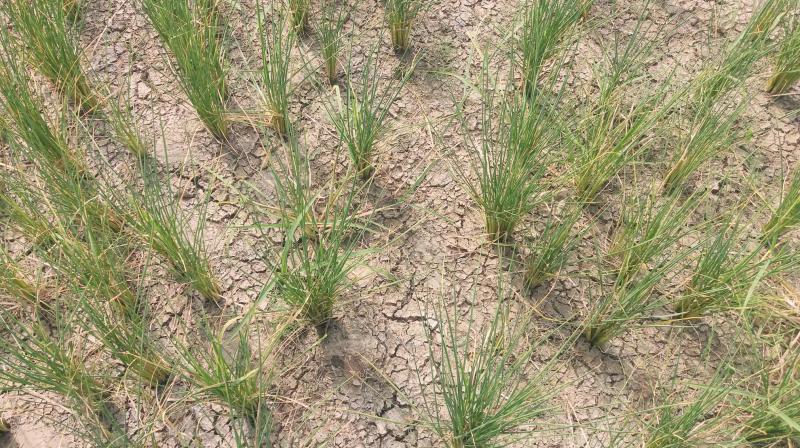Farmer suicides bares structural issues
The sudden rising deaths of ryots in Cauvery delta this year raises fresh concerns.

Chennai: If death, as the poet said, is a great leveller, death by suicide adds no grace to nature. And suicide by farmers comes even more as a rude shock tinged with utter pathos, as everywhere they are the food providers.
The rising farmer suicides in the Cauvery delta areas in 2016 — at least 16 such deaths till date amid a few reported from Erode and down south in Tirunelveli district in a poor monsoon year in Tamil Nadu so far — has again brought hard structural issues to the fore.
“The cotton belt of Maharashtra is where the suicides are taking place on a very, very large scale. It is the suicide belt of India,” says Dr P.M. Natarajan, a groundwater expert and a former member of the State Planning Commission, quoting the noted ecologist and agricultural economist, Ms Vandana Shiva.
While the terms of trade turned adversarial for agriculture since the late 1980s’, Natarajan points out that even by official figures, “more than 3 lakh farmers, cultivators and agricultural workers have committed suicide in India between 1995 and 2014”.
In Tamil Nadu, despite the agrarian distress, farmer suicides have been relatively more recent since 2002. The number is quite disconcerting in 2016. The sudden death of farmers in the wake of imminent crop failure and fear of inability to repay crop loans this year includes some farmers suffering heart attacks at home or in their fields on seeing their crops withering away due to lack of sufficient water, particularly in the Cauvery command area dependent on canal irrigation and non-availability of adequate storage in Mettur dam at the head of the system in the wake of Karnataka’s obduracy.
As the son of a farmer from an arid side of the Cauvery irrigation system, Dr Natarajan, sharing his insights with DC, said, “I still remember my mother weeping when the crops were withering,” indicating that it is a matter of life and death for them.
Detailed studies on why scores of farmers have chosen to commit suicide speak of several reasons. S. Kannaiyan and Jayaram Venkatesan, in a fact finding study of a similar situation in Tamil Nadu during the severe drought of 2012-13, when 13 farmers had reportedly committed suicide, have found that “an important reason is lack of enough water to save the standing crops.”
Circumstances ranging from threat of GM seeds, weak monsoon, disease, personal loss in the family to the government’s financial policies have also been cited as reasons for farmers’ suicides. This year, the sudden demonetisation of high-value currencies have only added to the farmers woes, with the Central government taking a ‘conscious decision’ to keep out primary agricultural cooperative societies and district cooperative banks from exchanging invalid notes for what it calls their ‘low levels of professionalism’. But all the experts agree that the “main factor of crop failure is scarcity of water during the crop season.”
“An estimated 52 per cent of the country’s 90 million rural agricultural households have one debt or another, borrowed for cultivation,” points out Dr Natarajan. It explains the rising clamour by various farmers associations’ leaders, including ‘Cauvery’ Dhanapalan, that Tamil Nadu should be declared drought-hit this year. It gives farmers some hope that debts do not turn psychological killers.
Pro-active state interventions like Chief Minister J Jayalalithaa announcing special packages for both the ‘Kuruvai (short-term) and ‘Samba (long-term) paddy crop seasons this year also, including three-phase power supply to delta districts to keep existing tube well irrigation going when the Cauvery issue was on the boil, have a limited utility and scope. But the long-term issues to be addressed are clearly structural, emphasise experts.
The most important among them, according to Dr Natarajan, if farmers lives in India “are not to become so cheap”, is ensuring a mechanism to “share excess waters” among states.
Within Tamil Nadu, in recent years, the overall cropping scenario has been ‘encouraging’, despite deficient monsoon rains, as per the latest State Economic Appraisal reports. The farm sector witnessed a severe drought, though, in 2012-13, when agriculture’s share in Tamil Nadu’s gross state domestic product (GSDP) had slipped from 7.40 per cent to 6.20 per cent. The last record food grains production in the state was 101.52 lakh tonnes in 2011-12, a level that is most likely to elude this year.
Even as technology gains in agriculture practices are being eroded by lack of water in the fields, an expanding horticulture has to contend with smaller land holdings, issues that have strong ideological undertones. Further, the most important cash crop, sugarcane, is not sweet to farmers with sugar mills running up crores of rupees in arrears with them.
Beyond these, the ‘yield gap’ in crop productivity except paddy across districts, as the official documents show, and between various cropping seasons including for paddy, are among the other key structural issues that cry for attention if long-term agricultural stagnation is to be averted.

